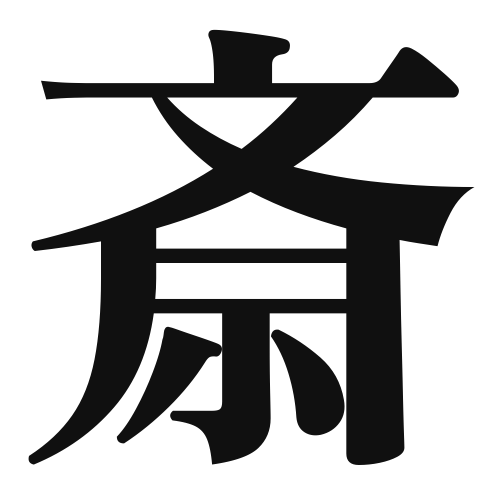1. Overview of Meaning
The kanji “斎” (sai) generally refers to purification or a state of being clean. It is often associated with rituals and ceremonies, particularly in a religious or spiritual context.
2. Formation and Radical
Formation of the Kanji: The kanji “斎” is a compound character that combines elements to convey its meaning. It is formed from the radical “斜” (sha), which relates to slanting or oblique, and the phonetic component “斎” itself, which suggests a connection to purification.
Radical: The radical for “斎” is “斜” (sha), which is often associated with meanings related to angles or slants.
3. Examples of Usage
Common Words and Phrases: Some common words that include “斎” are “斎場” (saijou – purification place) and “斎戒” (saikai – ritual purification).
Example Sentences in Daily Conversation:
- 「彼は毎年、神社で斎を行います。」(He performs purification rituals at the shrine every year.)
- 「斎場での儀式はとても神聖です。」(The ceremony at the purification place is very sacred.)
4. Synonyms and Antonyms
Similar Kanji: A similar kanji is “清” (sei), which also means clean or pure but is more general and not specifically tied to rituals.
Opposite Kanji: An antonym is “汚” (o), which means dirty or polluted, representing the opposite of purity.
5. Cultural and Historical Background
Connection to Japanese Culture: The concept of “斎” is deeply rooted in Japanese culture, particularly in Shinto and Buddhist practices where purification is essential before rituals.
Proverbs and Idioms: One common saying is “斎戒沐浴” (saikai moku yoku), which means to purify oneself before engaging in important activities, emphasizing the importance of cleanliness in spiritual practices.
